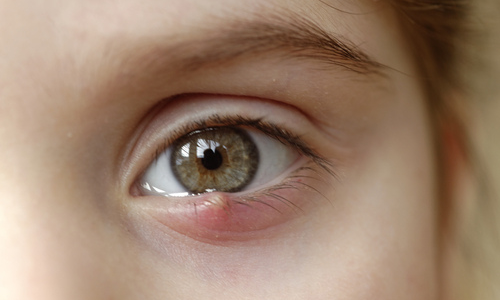
Is That Bump On Your Eyelid a Stye?
Styes may not be very big, but they can certainly cause a significant amount of pain and discomfort. Fortunately, most styes go away in a few days with home treatment. If your stye lingers, your optometrist can offer treatments that will help.
What Is a Stye?
Styes are red, painful bumps that form as a result of a bacterial infection. The bumps usually appear on or inside your eyelid. If you have a stye, you may notice:
- Eyelid Swelling
- A Feeling That You Have Something in Your Eye
- Crusty Discharge Along the Eyelid
- Pus in the Center of the Stye
- A Burning Sensation
- Sensitivity to Light
- Tearing
How Did I Get a Stye?
Styes appear when the oil glands underneath your eyelashes become inflamed and blocked by bacteria. The bump may appear if you absentmindedly touch your eyes or insert or remove your contact lenses without washing your hands first.
Other risk factors include forgetting to take off your makeup before you go to bed or using skincare products or makeup that has expired. If you have rosacea or blepharitis, a chronic condition that inflames the eyelids, you may also be more likely to develop styes.
What Can I Do to Treat a Stye at Home?
Warm compresses applied to the eye several times a day can help your stye drain and heal. Soak a clean washcloth in warm (not hot) water, wring it out, and hold it against your eyelid for 10 to 15 minutes. Warm tea bags can also be used as compresses if you prefer.
Don't share the washcloth with other members of your family. The bacterial infection that causes styes is contagious and can spread to other family members if they use the same washcloths or towels.
Avoid wearing makeup on and around your eyes while you wait for your stye to heal. Makeup could irritate the stye and slow healing. Throw away your eye makeup, even if it's not expired. If the makeup is contaminated by bacteria, you may develop a new stye if you continue to use the product.
Clean your eyelids several times a day with a wet washcloth, or use eyelid cleanser pads or makeup pads from the drugstore. A diluted solution of baby shampoo will keep your eyelids clean without irritating your eyes. Wash your hands before cleaning your eyes, and try to keep your hands away from your eyes during the day.
If pain is an issue, over-the-counter pain relievers can be helpful.
What Treatments Do Eye Doctors Offer?
Most styes begin to improve within about a week of home treatment. If it's been a few weeks and you still have a stye, it's time to visit your optometrist.
He or she may recommend one or more of these treatments:
- Antibiotic Drops or Cream. Antibiotic eye drops or cream kill the bacteria that caused your stye.
- Oral Antibiotics. If your stye doesn't get better after you use the eye drops or cream, you might need to take oral antibiotics.
- Draining: Stubborn styes may need to be drained. This minor surgical procedure involves making a cut in the stye to allow the pus to drain. Once the pus is gone, your stye will begin to heal. You'll receive a local anesthetic before the surgery to ensure that you feel no pain.
Do you have a stye that just won't go away? We can ease your discomfort and help your stye finally heal. Contact our office to schedule a convenient appointment.
Sources:
All About Vision: Eye Styes: Causes and Symptoms, 2/20
American Academy of Ophthalmology: What Are Chalazia and Styes?: 8/29/19


